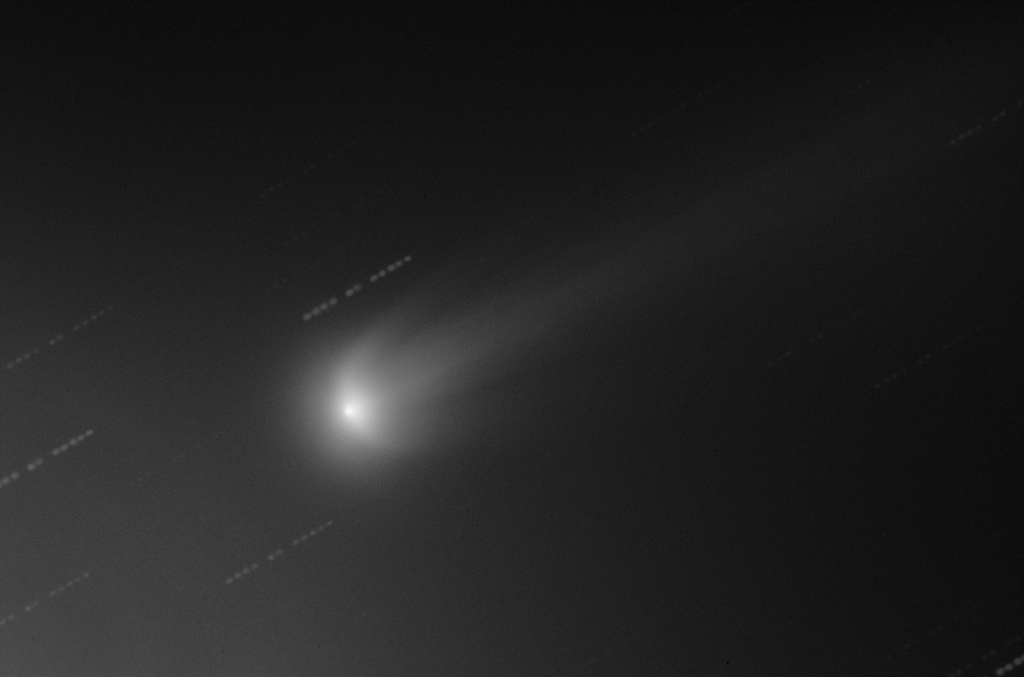Images taken of Comet ISON in the last few days by scientists from the Max Planck Institute for Solar System Research (MPS) and the Wendelstein Observatory of the Ludwig-Maximilians-University in Germany suggest that one or more fragments may have detached from the main nucleus of Comet ISON which may explain the recent outburst of activity reported last week.
Until approximately 2 weeks ago, Comet ISON was disappointing observers by brightening far slower than the models which generated all the hype months ago had predicted. However, on November 7th, ISON’s brightness suddenly increased abruptly, with several observers around the world reporting the event.
Images taken on November 14th and 16th show two wing-shaped features in the comet’s atmosphere, resembling a “U” shape may now provide an explanation. The striking wing-like features protrude from the comet’s nucleus and though dim in the November 14th image, they are very prominent in the image taken 2 days later. Dr. Hermann Böhnhardt from the MPS explained that these so called “coma wings” typically occur after individual fragment breaks away from the nucleus.

Image taken on November 16th, 2013 shows ISON’s atmosphere with two wing-like features resembling the letter U. Credit: Wendelstein Observatory of the LMU/MPS
Just as the nucleus emits gas and dust, so the fragments and where the emission from both meet, a boundary layer forms which often takes on these wing-like structures as seen from Earth. While the observations do not conclusively prove a fragmentation event has occurred, there is a substantial case history of some 50 comets where a connection between the phenomena is well established. A previous well known example was the fragmentation of comet 73P/Schwassmann-Wachmann, part of which was observed by the HST in 2006.
In the recent images taken of Comet ISON, the coma wings cannot be seen visually and are only revealed using data reduction algorithms which look for spatial changes in the light intensity of the coma. The uniform background brightness of the coma is eliminated which reveals the fainter hidden structure. The team state their calculations suggest that ISON lost only one, or perhaps a very few fragments of perhaps 50m across.
Comet ISON will reach perihelion at 18:25:57 UTC on November 28th when it will skim only 724,000 miles (1,165,000km) above the surface of the Sun. Currently there are a lot of questions as to whether ISON will survive this close approach with the Sun as it will pass inside the Roche limit, a distance where the gravitational force of the Sun can tear an object apart. Böhnhardt points out that “according to past experience, comets that have lost one fragment tend to do it again.” This would suggest that the chances of ISON surviving perihelion are not great but we should not be too worried as there is the possibility that the debris could lead to spectacular tail for us to enjoy during December. We will have our answer in approximately than 2 weeks.






Pingback: Is Comet ISON disintegrating? | Alpha Lyrae